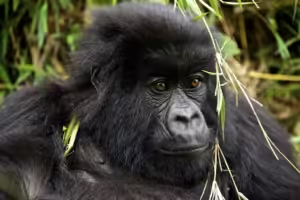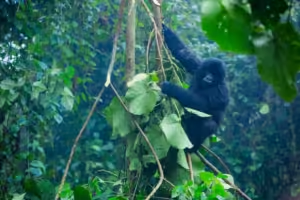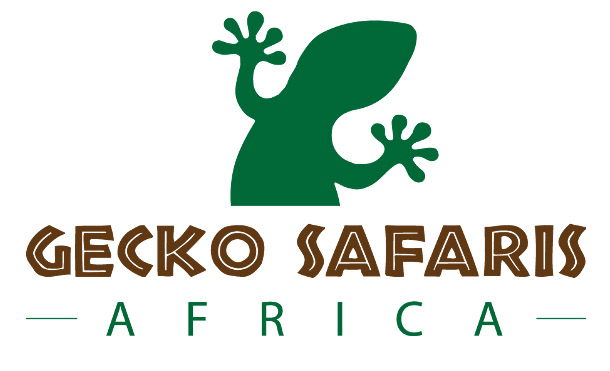Gorillas in Rwanda : Guardians of the Misty Mountains in Rwanda.

Gorillas in Rwanda are about one third of the 1,100 mountain gorillas remaining globally and these reside in Rwanda’s Volcanoes National Park.
Mountain gorillas are the only type of gorillas that are native to Rwanda. Other types of gorillas, such as lowland gorillas, are found in different regions of Africa, primarily in Central Africa.
Lowland gorillas live in rainforests and swamp forests across countries like the Democratic Republic of Congo, Cameroon, and the Central African Republic.
Mountain Gorillas (gorilla beringei beringei)
Mountain gorillas are a subspecies of the Eastern gorilla and are found in the dense forests of the Virunga Mountains in Rwanda, Uganda, and the Democratic Republic of Congo.
They primarily inhabit the high-altitude cloud forests of the region, which provide the cool, moist environment they prefer.

Volcanoes National Park (Parc National des Volcans)
This is the primary hotspot for mountain gorillas in Rwanda.
The park is located in the northwest of the country and encompasses part of the Virunga volcanic mountain range.
It’s renowned for its successful gorilla conservation efforts and is one of the best places in the world to see these magnificent creatures in the wild.
Gorillas in Rwanda are a subspecies of the Eastern gorilla, distinguished by their relatively smaller size compared to other gorilla subspecies.
They have a dense, long, and shaggy coat to adapt to the cool, misty climate of the high-altitude forests.
Behavior and Social Structure
Mountain gorillas are generally gentle and social animals.
They live in groups led by a dominant silverback male.
Their diet mainly consists of leaves, stems, fruit, and flowers.
They spend a lot of time foraging and resting.
Social Groups:
Mountain gorillas live in groups called troops which usually consist of one dominant silverback male, several females, and their offspring.
The silverback is responsible for the group’s protection and leadership.
Their day is primarily spent foraging for food, playing, grooming each other, and resting.
They build nests each night to sleep in, usually on the ground but sometimes in trees.
Gorillas communicate through vocalizations, body language, and facial expressions.
They have a range of sounds used for different purposes, such as warning calls or expressing contentment.
A Life-Changing Experience when trekking Gorillas
Gorilla trekking in Rwanda is one of the most sought-after wildlife experiences in the world.
Every day, a limited number of permits are issued to allow tourists to trek into the misty forests and observe these gentle giants up close.
The trek itself is often challenging, involving hours of hiking through dense vegetation, muddy paths, and steep slopes.
However, the reward is unparalleled the chance to witness a gorilla family in its natural habitat.
When you finally come face-to-face with a group of gorillas, the experience is nothing short of awe-inspiring.
The sight of a silverback calmly surveying his surroundings playful juveniles swinging from tree branches.
A mother tenderly cradling her infant is a poignant reminder of our connection to the natural world.
The hour spent with them is filled with silent observation, respectful distance, and unforgettable memories.
Conservation Success Story
Rwanda’s mountain gorillas are one of the greatest conservation success stories in Africa.
Once on the brink of extinction of these mountain gorillas due to poaching, habitat loss, and diseases, their numbers have steadily increased over the past few decades.
This success is largely attributed to the combined efforts of the Rwandan government, local communities, and conservation organizations like the Dian Fossey Gorilla Fund.
The commitment to protecting these gorillas has been relentless. Anti-poaching patrols, veterinary care, community education, and habitat restoration have all played a part in this achievement.
Additionally, gorilla tourism has provided a significant economic incentive for conservation, as revenue from trekking permits directly funds park management and community development projects.
This sustainable tourism model has transformed the lives of local communities, providing jobs, healthcare, and education, while fostering a deep sense of pride and stewardship for the gorillas.



